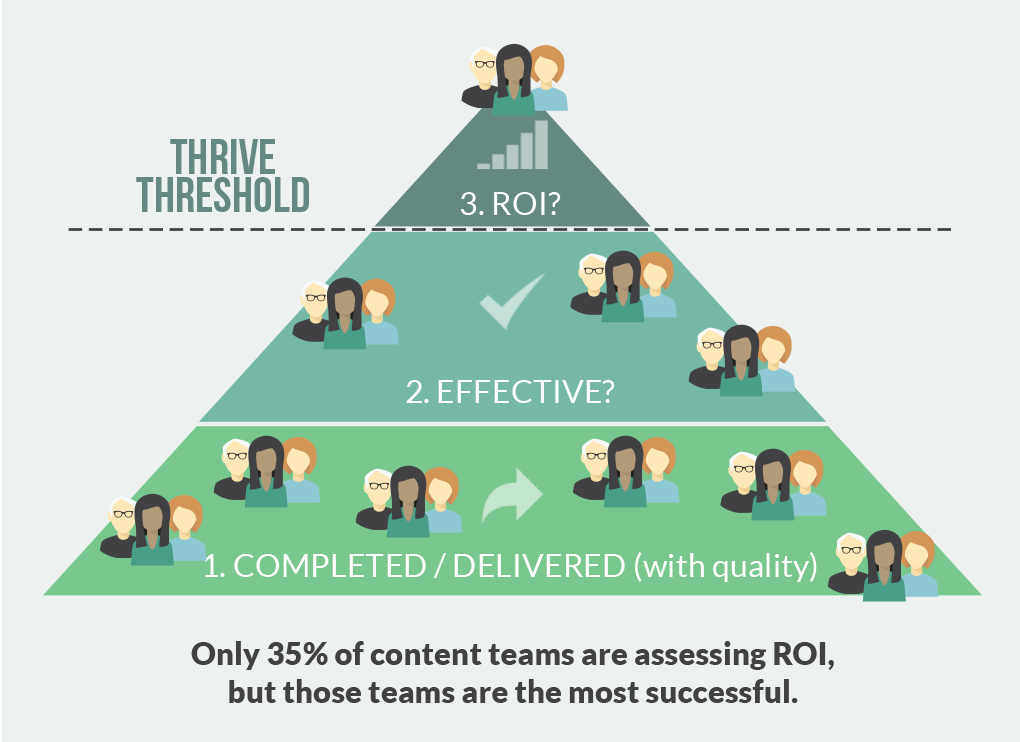
Hits. Page views. Bounce rates. Oh my. Chances are you’re having to consider analytics to understand the impact of your content. Whether we develop content marketing or a content product, we’re more accountable than ever for whether content gets results. That’s not surprising. What does surprise me is the range of challenges we still face to get useful, actionable data about our content’s impact.
I’ve heard lots of complaints about these challenges and still do. Understandable. But no one is going to figure this out for us. I feel now it’s time to pull up our diapers and roll up our sleeves to not only solve for content analytics but also to evolve this effort into content intelligence. Today, I offer these don’ts to set your content intelligence effort up for success.
1. Don’t Settle for the Content Data Ghetto
We hear buzz words such as “data-driven organizations.” Yet I am amazed at how difficult accessing content-related data is at midsize and enterprise organizations. From a data standpoint, content teams are treated as second-class citizens. This lack of access can be obvious, such as no one on the content team has a user account for Google Analytics or Adobe Analytics. But more often it’s subtle, such as:
- The analytics / insights / business intelligence team is too busy to help.
- You get a voluminous regular report with lots of disclaimers and caveats. You can’t take action or do any follow-up analysis.
Fight against this lack of access, no matter how subtle it is. Why? What matters to an organization gets measured. If your organization does not measure content in a meaningful way, content does not matter to your organization. While getting the next content product out might seem more pressing, if you do not persist on getting access to data about your content, you will not be able to show impact and will eventually find your work treated as a cost center, not a strategic asset.
2. Don’t Fall for Content Vanity Metrics
Page views! Shares! Likes! More = good and less = bad, right? I’ll be the first to admit it feels good to have your content receive attention. (If you shared this article, for instance, I’d thank you heartily.) But, unless getting attention or raising awareness is the main goal of your content, those metrics don’t tell the full story of your content’s impact.
And, you’ll likely get access to these metrics when you first address “don’t” No. 1, because these metrics are easy to provide. While that’s great progress, you likely will need more.
To avoid dwelling on vanity metrics and start to make the case to learn more:
- Note down the content goal.
- Write down questions about whether your content is accomplishing the goal.
- Write down possible data points to answer those questions. You don’t have to be a data or numbers expert to think about the possibilities.
For more help, try out this content intelligence worksheet.
3. Don’t Position Intelligence and Creativity as Enemies
Some people on your content team might not welcome content intelligence for fear it will stymie the flow of creative juices. So, it’s important not to feed the myth that data, numbers, and the like are enemies of creativity. Instead, position the content intelligence as a tool to spur creativity. How does it spur creativity? By introducing constraints.
One of my favorite technical communication professors once said, “From great constraint comes great creativity.” Well, more and more psychology research is proving those words to be true.
So, position content intelligence as a constraint your team gets to live with to prompt more, not less, creativity in reaching your content goals. Your audience doesn’t respond to lengthy reports with detailed charts, for example? Try an infographic or a data visualization. Content intelligence is a friend, not an enemy, of content creativity.
4. Don’t Conflate Perception Data with Qualitative Data
All things considered, I’m glad we have more data about content and more potential access to it now than ever before. But, one risk of this proliferation of data is misunderstanding and misapplying it. Where I see a lot of understandable confusion is teasing out these differences:
- Qualitative vs. quantitative data
- Behavioral vs. perception data
I sometimes hear smart and well-intentioned people refer to any data that is not web analytics as qualitative data. They might say, “Our survey gave us some qualitative data …,” for example. Actually, with a solid sample size, survey data is quantitative data. The difference between survey data and web analytics is what they measure quantitatively. Survey data measures perceptions (what people think and feel), and web analytics measure behavior (what people do with your website). Sentiment data, ratings, call inquiries, and other kinds of data related to perceptions also can be quantitative. To understand the true impact of your content, you need both kinds of data.
Why am I bringing this up? Not to be pedantic, but to set you up for success. If you mislabel your data about perceptions as qualitative data, you will undermine the insights from that data and weaken the story about your content’s impact. Most companies and organizations I encounter rely more on quantitative data to understand the impact of their content. For instance, they use qualitative data, such as interviews or contextual inquiry, to define personas, generate ideas, and inform goals for their content — before releasing the content into the digital universe. But, after releasing the content, they trust quantitative data to understand whether the content worked. Don’t sell the impact of your content short by mislabeling the data you’re using.
5. Don’t Give Up on Calculating the Return on Your Content Assets
Was the impact of creating and promoting your content assets worth the cost? Strive to answer this question, even if it seems difficult. I stress this point because in our study of 111 content teams, only 35% evaluated ROI. Yet those teams were thriving the most.

What if you’re a nonprofit or government agency? Does content ROI apply? I say yes. Let me share an example.
In public health, Centers for Disease Control and Prevention (CDC) regularly estimates the return on investment in health communications and content by developing appropriate formulas. The TIPS from Former Smokers campaign to encourage smoking cessation cost only $480 per smoker who quit and $393 per year of life saved. The widely accepted benchmark for a successful public health intervention? $50,000 per year of life saved. In this case, content and its promotion was an efficient and effective use of taxpayer funds. CDC arrived at its ROI metric for the TIPS campaign through reasonable assumptions and calculations. So, take a cue from CDC and make an effort to estimate ROI, even if it seems difficult at first.
Let these five don’ts do help you overcome the challenges of collecting, interpreting, and applying content analytics so that you build content intelligence. I know the challenges are frustrating. Even I get daunted by them at times. But I see now that these challenges are a huge opportunity to change not only our content for the better but also our organizations and ourselves. Content intelligence empowers us to become who we aspire to be, online and off.






Comments
Comments are closed.
We invite you to share your perspective in a constructive way. To comment, please sign in or register. Our moderating team will review all comments and may edit them for clarity. Our team also may delete comments that are off-topic or disrespectful. All postings become the property of
Content Science Review.